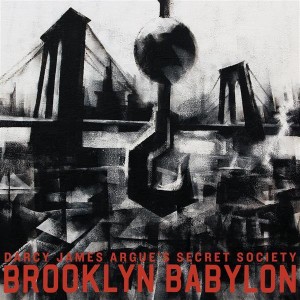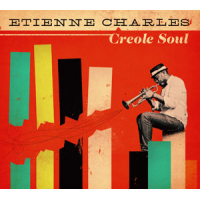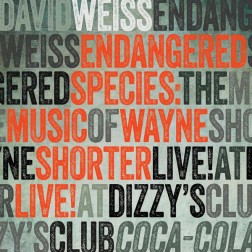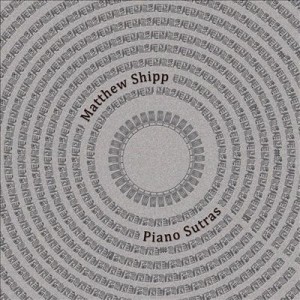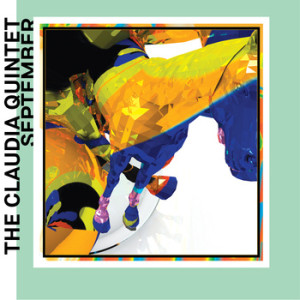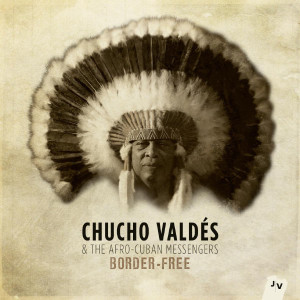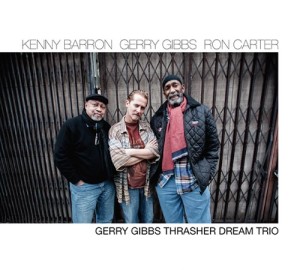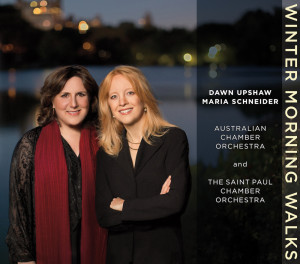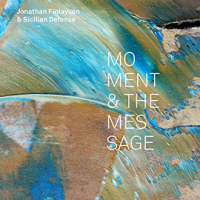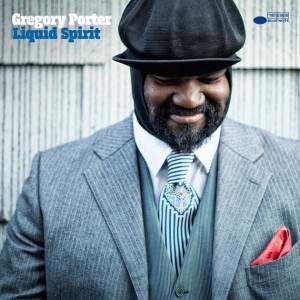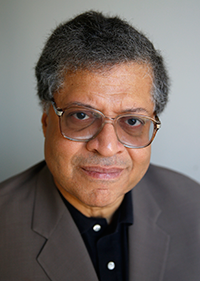Of the assorted cans of worms pried open among jazz heads on the Internet in recent years, my favorite comes from Branford Marsalis who has been calling out his peers (and, by implication, critics like me) for embracing virtuosity and harmonic invention at the expense of melodic content, which in turn was pushing more and more listeners away. “Harmonic music,” Marsalis said back in 2011, “tends to be very insular. It tends to be [like] you’re in the private club with a secret handshake.”
From that same interview: “When laypeople listen to records, there’re certain things they’re going to get to. First of all, how it sounds to them. If the value of the song is based on intense analysis of music, you’re doomed. Because people that buy records don’t know shit about music. When they put on ‘Kind of Blue’ and say they like it, I always ask people: What did you like about it? They describe it in physical terms, in visceral terms, but never in musical terms.”
The argument over whether jazz is hermetically sealing itself by being absorbed with invention-for-its-own-sake is as almost as old as jazz itself. Ralph Ellison and Albert Murray, for all their worship of literary modernism, snarled over most of the boundary-busting jazz music that came after the swing era. (People of varied generations and races are always shocked to find that Ellison disliked Charlie Parker almost as much as Philip Larkin.) Even Miles Davis at some point in the early1960s admitted that he didn’t buy jazz records of his era because “they make me too sad, man.”
I don’t get sad with what I hear lately. Once in a while, I even like being sad, and so do what Marsalis calls, “laypeople.” But there were times in the last several months when I was getting impatient with the new discs I was listening to. I was, like, OK, I’m impressed. But I’m not aroused. So you can make chord changes sit up, roll over and swim across a pond. But my question is the same one Lester Young asked long ago, “Can you sing a song?” I’ll throw another one out there: Can you handle a groove?
Maybe that’s why, even in a better-than-average year for product, I was drawn to those albums that gave me a bit more of what Marsalis describes as “physical” or “visceral” pleasure. I admit that in Larkin’s famous tautology, I still lean a little more towards intelligence-without-beat over beat-without-intelligence. But most of what I choose to venerate this year came close to achieving a balance between the two. The needle’s still stuck at the low end as far as jazz music’s presence in the marketplace is concerned. But maybe some of these will help nudge it a little higher and attract more people who search the clouds, or Cloud, for sounds that both please and challenge. Baby steps, I suppose; dance steps, I hope.
1.) Ahmad Jamal, “Saturday Morning” (Jazzbook) – You’re Ahmad Jamal and life right now couldn’t be more satisfying. You’ve outlasted almost all the pianists you’ve influenced since the 1950s who, fairly or not, received more critical approbation than you. You’ve also outlasted most of those critics who either demeaned or second-guessed your popularity and, in any case, never gave you the degree of respect you’ve received from audiences and fellow musicians. In the meantime, you’ve been putting out immaculately crafted recorded product for at least the last three decades. And at 83 years old, you’re playing with even greater vitality, invention and polish, submitting (for our approval) one of the crown jewels of your long career: A sweet-swinging session recorded at the Studio La Buissonne with the attentive support of bassist Reginald Veal and drummer Herlin Riley. As always, your trio keeps time like a handcrafted wristwatch. What broadens the package is the sparkling variety of tempo and mode. You seem even more engaged by the material, even with such familiar should-have-been-classics-long-ago as “The Line.” And though yours is the last such unit that would need extra percussion, the contributions of Manolo Badrena are seamlessly wired into your rhythm machine. You’re Ahmad Jamal and we’re just about as satisfied with your life right now as you are. (Thank you, Jimmy Cannon and may your own termite artistry soon be rediscovered.)
2.) Steve Coleman & Five Elements, “Functional Arrhythmias” (Pi) –And speaking of rhythm machines…First, though, a confession: Over the three or four decades alto saxophonist/composer Steve Coleman’s M-Base movement has been around, I could never cozy up to it; especially when it seemed intent on fashioning a kind of cerebral funk, as I prefer my funk to be pure and uncut. GIVE IT UP, PEOPLE, FOR BOOTSY’S RUBBER BAAAAAANNNND!!!! But I digress…If Coleman’s aesthetic principles have led to this ultra-sophisticated and fearsomely versatile aggregation of bassist Anthony Tidd, drummer Sean Rickman, guitarist Miles Okazaki and trumpeter Jonathan Finlayson, then I need to rethink, if not revoke, my earlier skepticism. As the titles of both the disc and its contents (e.g. “Sinews”, “Cerebrum Crossover”, “Cardiovascular”) imply, the intent here is to strike a polyrhythmic, harmonically complex connection with human physiology. It’s a smart idea (inspired, as Coleman says, by the example of drummer Milford Graves). But the intelligence behind the concept isn’t as conspicuous as its vigorous application. The band members are locked into each other’s frequencies and their interaction glides, strides, twists and meshes in the same manner as an abstract painting or modern dance piece. Coleman and Finlayson’s front-line conversations have a riveting yin-yang quality that places them at or near the high-end spectrum of such similar sax-horn confabs as Bird and Diz, Trane and Miles and Coleman’s namesake (if not relative) Ornette and Don Cherry. This disc has all the brains, and then some, of Coleman’s body-of-work. But it’s also got an unexpected surplus of — well, you know – heart.
3.) Darcy James Argue’s Secret Society, “Brooklyn Babylon” (New Amsterdam) – Having spent twenty thrilling years inhabiting the Beautiful Borough as it made the awkward, irrepressible leap from hipster incubator to Promised Land, I can testify that one of the many things that fascinate even the most casual Brooklyn bystander is the ongoing tension between its gilded skyscraping aspirations and its wait-till-next-year past lives. This 17-part suite for an 18-piece orchestra conflates Brooklyn’s past, present and (potential) future into what amounts to a steampunk fantasy novel of the mind. Argue’s epic tells the story of a master carpenter named Lev who, in a dystopian future (or alternate present), is commissioned to build a carousel atop a tower whose immensity could obliterate whatever‘s left of Brooklyn’s old-soul romance. The music aims as high as that mythical tower and you can feel yourself ascending on its surging waves of energy. But the suite doesn’t just go up; it spreads out to encompass different cultures from Eastern Europe to Latin America to the Middle East, keeping a fingertip or two on all-American swing and/or rock. You could follow Argue’s story or project one of your own upon its volatile contours. As with the only science fiction that matters, “Brooklyn Babylon” is lavishly hypothetical, strangely familiar and recognizably human in the grandest and grubbiest terms.
4.) Etienne Charles, “Creole Soul” (Culture Shock) – Jazz’s grow-or-die imperative has found its most gratifying adherents among 30-and-under musicians willing to use what they’ve learned of the music’s basics as springboards to more adventurous or exotic compounds. Charles, who just turned 30 this year, is a Trinidad-born trumpeter who received much of his education at Florida State and Juilliard and was inspired by the examples set at both institutions respectively by Marcus Roberts and Wynton Marsalis in re-energizing the music’s mainstream traditions. He retains some of Marsalis’ sound in his horn. But it’s the multicultural, polyrhythmic setting of this zesty, spicy gumbo that makes Charles’ music sound like exactly no one else’s. With a formidable array of young instrumentalists and percussionists as backup, Charles immerses himself in the varied strains of Caribbean pop – reggae, mambo, conga, even Gulf Coast R&B – to put together an mélange of electro-boogie, calypso and funk. Traditionalists can growl, snap and dismiss it all as “slick” pop. But the music they cherish has a far better chance for long-term survival with a sensibility willing to invite Monk (“Green Chimneys”), Marley (“Turn Your Lights Down Low”) and Bo Diddley (“You Don’t Love Me”) to the same house party and give each of them the respect and elbowroom they deserve. And, by the way, he also serves up melodies that stick to your head like Post-It notes reminding you what music is for.
5.) David Weiss, “Endangered Species: The Music of Wayne Shorter” (Motema) –Weiss, who also holds down a trumpeter’s chair here, leads a 12-piece murderer’s row of first-rank instrumentalists that includes trombonist Steve Davis, trumpeter Jeremy Pelt, saxophonists Ravi Coltrane and Tim Green, drummer E.J. Strickland and the incomparable pianist Geri Allen in celebrating the legacy and (though recorded live a year earlier at Dizzy’s Club Coca-Cola) 80th birthday of the Greatest Living Jazz Composer. They do not come to merely pay homage. That would be too much like church and the guy they’re honoring is far from finished. (See below.) Weiss instead leads his cadre on a reconnaissance mission probing the less-heralded (as in least-covered) pieces of the Shorter oeuvre as a means of illuminating its orchestral possibilities. The recital opens your eyes from the jump with “Nellie Bly,” which the always-surprising Mr. Weird wrote very early in his career when he was sitting in Maynard Ferguson’s reed section and now comes across as one of the more ornately conceived barn-burners ever lit. Even the most familiar of these selections, the inscrutably haunting ballad “Fall,” is given a rich, harmonically-layered treatment that inspires glistening fire-and-ice variations from Allen, Coltrane and, especially, Pelt. As widely acknowledged as Shorter’s writing brilliance has been over generations, it takes a classic setting such as this to reaffirm both the sturdiness and suppleness of Shorter’s melodies e.g., they endure and you can do almost anything you want with them.
6.) Matthew Shipp, “Piano Sutras” (Thirsty Ear) – If progressive jazz pianists carried the same renegade credibility in pop culture as heavy-metal rock guitarists, Matthew Shipp would be a biker’s tattoo by now. Twenty-something years is a long time to be an Angry Young Man. But the customary rules don’t apply to Shipp, who at age 53 can still wield a thorny club with swaggering panache, both on- and off-stage. His jazz-outlaw persona packs dual reserves of intensity and insolence; the latter, especially, gets him noticed in jazz circles when it’s directed at such elder statesmen as Shorter, Herbie Hancock and Keith Jarrett – the latter of whom could, ironically enough, match Shipp on whatever Mr. Cranky meter that’s available. For whatever it’s worth, I think Shipp’s uncompromising, mostly unsung insurgency gives him better reason to complain than Jarrett. He even released a “Greatest Hits” compilation earlier this year that made an impassioned what-the-eff-more-do-I-have-to-do case for his artistry. Still, this solo recital, meditative, prickly and ingenious, is an even more persuasive brief on Shipp’s behalf. It literally stomps, like the step-master of an unruly fraternity, to its own beat, piling dense tone clusters and weaving thick harmonic passages into eccentric, arresting patterns. On such pieces as “Cosmic Shuffle” and “Uncreated Light,” Shipp indulges his combative impulses before giving way to lyrical rumination. Though he may seem at times to be an unrepentant churl, Shipp’s “Sutras” remind listeners that, whatever hard things he may have to say, or play, at a given moment, he’s not inclined to stay mad – or stay anything else – for very long. (I bet he’s still happy, though, that I ranked this disc ahead of the next one.)
7.) Wayne Shorter Quintet, “Without a Net” (Blue Note) –As I said (maybe) earlier this year, the more I’ve listen to it, the deeper its mysteries grow; almost to the point of making me wonder whether there’s anything more to this group’s colloquies than mysteries for their own sake. Then, I try to tell myself what Shorter, in his way, is telling everybody else: that questions and answers are often the same thing. And I’ll go, yes, but…This incessant give-and-take between my ears is why “Without a Net,” for all its insistence on keeping secrets, stays on this list, no matter what. Give me another month or two and it’ll likely be back in the top five, but for the moment….
8.) The Claudia Quintet, “September” (Cuneiform) – Because I am an easy mark for crafty historical gimmicks, I was piped aboard this vessel by a number called “September 29th, 1936: ‘Me Warn You’,” in which the voice of FDR, sarcastically chiding his Republican fat-cat opposition for their empty promises of out-dealing the New Deal, is carved up, sampled, mixed, mimicked and harmonized with throughout by this eclectic chamber ensemble led by percussionist John Hollenbeck and featuring Chris Speed on reeds, Matt Moran on vibes, Red Wierenga on accordion and either Drew Gress or Chris Tordini on bass. Once you get past the wonder of hearing instrumental correlatives to Roosevelt’s memorable pipes and recognize the sly contemporary references being made by this juxtaposition, you start to wonder if the joke is being carried a little too far – until, about seven minutes in, when the group, collectively and individually, starts laying down its own cheeky variations on the president’s joke. This open-ended interplay typifies the rest of the album – a series of sound mosaics and tone poems devoted to the month that Hollenbeck prefers to use as time for reflection and contemplation. There’s a witty birthday salute to the unavoidable Mr. Shorter (“September 9th Wayne Phases”), a deep-dyed autumnal ballad (“September 25th Somber Blanket”) and, inevitably, a 9/11 piece (“September 12th Coping Song”) that closes the disc on with introspection that never becomes maudlin. It’s taken me longer than it probably should to have climbed aboard Claudia’s bandwagon and I’m still not sure why this particular one did the trick. But I plan to check back with them.
9.) Chucho Valdes, “Border Free” (Jazz Village) – I hope he wont take this the wrong way, but it must be said up-front: This man is a beast, a monster, an unstoppable force-of-nature – and, to be sure, a supreme virtuoso. But his is the kind of virtuosity that, rather than swooping down from thin air, blows the doors open to his listeners, making them run en masse towards him and scream for more. (Just listen to the first five minutes of “Congadanza” and you’ll know exactly what I mean. The last four are pretty “wow”, too.) Valdes is also a paragon among 70-something artists who seem to be gaining in raw power and messianic force with age. He and his Afro-Cuban Jazz Messengers aren’t just wearing down the all-but-fragmented barriers between hard bop and Latin jazz; they’re also expanding rhythmic horizons towards Native American (“Afro-Comanche”) and Andalusian (“Abdel”) sources of inspiration. He also takes time out to honor both his pianist father (“Bebo”) and his late mother (“Pilar”) in ways that make his Cuban homeland vivid and stirring. OK, so he gets a little carried away at times with the occasional Rachmaninoff reference and melodramatic flourish. So long as you can still keep up with the stories, what do they matter?
10.) Gerry Gibbs, Kenny Barron, Ron Carter, “Gerry Gibbs Thrasher Dream Trio” (Whaling City Sound) – If I had Barron, a grandmaster of jazz piano, and Carter, the greatest bassist alive, at my disposal, I bet even I could complete a dream trio with a frying pan, a crockpot and a pair of wooden spoons. But Gibbs, who’s been following in his vibraphonist father Terry’s footsteps by leading his own big band, brings his own aggressive sound, far-reaching chops and orchestrator’s instincts to this session, giving these two demigods a wide-open frame for their immense resources to roam like wolves. The result is a surprising rarity: a piano trio album delivering music with the heft and momentum of a larger ensemble, thanks mostly to the prodigious balance of power and flexibility coming through Gibbs’ trap set. Along with the usual stops (“Epistrophy,” “Impressions,”), the trio shines new light on works by McCoy Tyner (“When I Dream”) and Herbie Hancock (“The Eye of the Hurricane,” “Tell Me a Bedtime Story”). The biggest revelations, however, come from the pop book: that old mid-1960s warhorse, “The Shadow of Your Smile,” Stevie Wonder’s “Don’t You Worry ‘Bout a Thing” and, most especially “Promises, Promises,” whose sleek mounting and seamless arrangement here showcase Carter and Barron’s mastery of tempo and changes while delivering what may be the most effective jazz take yet on a Burt Bacharach tune.
HONORABLE MENTION: Maria Schneider & Dawn Upshaw, “Winter Morning Walks” (ArtistShare) Marc Cary, “For the Love of Abbey” (Motema) Charles Lloyd & Jason Moran, “Hagar’s Song” (ECM) Joe Lovano UsFive, “Cross Culture” (Blue Note) Geri Allen, “Grand River Crossings” (Motema) Bill Frisell, “Big Sur” (Okeh) Carla Bley, Andy Sheppard, Steve Swallow, “Trios” (ECM) Wadada Leo Smith & Tumo, “Occupy the World” (Tum) Ben Allison, “The Stars Look Very Different Today” (Sonic Camera) Rudresh Mahanthappa, “Gamak” (ACT) Fred Hersch & Julian Lage, “Free Flying” (Palmetto) Art Pepper, “Unreleased Art, Vol. VIII: Live at the Winery, September 6, 1976” (Widow’s Taste) Matt Mitchell, “Fiction” (Pi)
BEST NEW ARTIST: Jonathan Finlayson & Sicilian Defense, “Moment & the Message” (Pi)
BEST VOCALIST: Gregory Porter, “Liquid Spirit” (Blue Note) HONORABLE MENTION: Youn Sun Nah, “Lento” (ACT)
BEST LATIN ALBUM: “Creole Soul” HONORABLE MENTION: “Border-Free”


